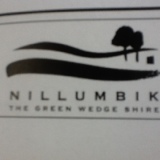Information
-
Document No.
-
Audit Title
-
Client / Site
-
Conducted on
-
Prepared by
-
Location
-
Personnel
Food Receipt
-
Wherever possible food should only be delivered when someone is at the business to assess and accept the items
-
Food deliveries must be checked randomly for signs of contamination
-
Packaging of food must be sound and undamaged
-
All foods must be protected from animals, dust etc
-
Food must be protected from cross contamination ie. raw and ready to eat foods stored separately
-
Food must be stored in contained suitable for food contact
-
Only accept food from an approved supplier
Are foods labelled and identified?
-
The following must be produced on request:<br>Name and business address in Australia air the vendor, manufacturer or packer (in the case of imported food, the name of e business address in Australia or importer)
-
The Following must be produced on request:<br>Prescribed name of the food (if no prescribed name, an appropriate designation of the food)
Is food delivered under temperature control?
-
Foods that are intended to be received frozen, must be frozen when accepted ie. food not thawing
-
Potentially hazardous food must only be accepted at a temperature of 5 degrees or below or 60 degrees or above, or at another temperature if the delivery has been for a controlled period of time that has not affected the safety of the food (must be documented)
Food storage
Is food protected from the likelihood of contamination?
-
Food must be stored to protect from cross contamination ie. raw foods stored separately or kept away from ready to eat foods
-
Food must be covered to protect if from contamination
-
Food must be stored in food grade containers
-
Food must be stored off the floor
-
Unlabelled food must be date marked to assist with stock rotation
Is food stored under proper conditions?
-
Food must be stored in such a way that the environmental conditions ie. heat, humidity, light, will not adversely affect the safety and suitability ofthe food.
Is food stored under temperature control?
-
Potentially hazardous foods must be stored at or below 5 degrees or at or above 60 degrees or at another temperature for a controlled period of time that will not affect the safety of e food (must be documented)
-
Potentially hazardous foods that are intended to be stored frozen must remain frozen during storage
Food processing
As all practicable measures taken to process only safe and suitable food?
-
Food must be checked prior and during processing for signs of contamination and deterioration
-
Sock must be rotated adequately so foods with expired use-by dates are not used
Are all necessary steps taken to prevent the likelihood of food being contaminated?
-
Preparation equipment and food must be effectively protected from contamination during preparation ie. people, dust, animals
-
Food handlers must be taking all reasonable measures to minimise handling food or food contact surfaces ie. minimising bare hand contact through use of tongs, gloves etc
-
Separate cutting boards, utensils and work surfaces us, must be washed and sanitised between USA, to prevent transfer of bacteria from raw to cooked food during preparation
-
Chemicals must be kept separate from food processing areas.
Pathogen control step
-
A process step must be used that is reasonably known to achieve microbiological safety of the food (cooking, pickling, fermenting)
No pathogen control step
-
When processing a potentially hazardous food that is not undergoing a pathogen control step, ensure that the time the food remains at temperatures that permit the growth of infectious or toxigenic microorganisms in the food is minimised
Time/temperature control
-
The business must demonstrate that it can achieve the cooling temperature/time requirements for cooked foods ie. from 60 degrees to 21 degrees within 2 hours, and from 21 degrees to 5 degrees within a further 4 hours
-
Large volumes of food must be divided into smaller portions to aid cooling.
Reheating process
-
Potentially hazardous foods that are being reheated to be held on hot display must be refrigerated rapidly to a temperature of 60 degrees or above.
-
Potentially hazardous food must only be reheated once.
Food display
Are displayed foods protected?
-
When displaying food all practicable measures are taken to protect the food from the likelihood of contamination:<br>Packaging of foods on display must be intact<br>Effectively supervised
-
Separate utensils for each food are provided or other dispensing method that reduces likelihood of contamination
-
Display unit is provided with protective barriers
-
Ready to eat food on display that is not intended for self service must be enclosed, contained or wrapped (ie. cakes, biscuits on counter)






